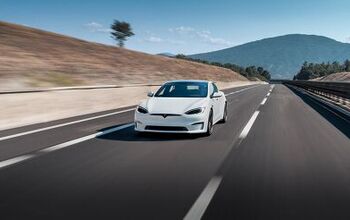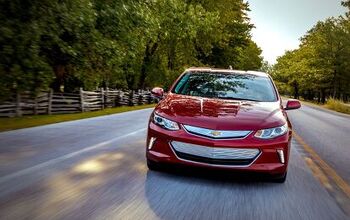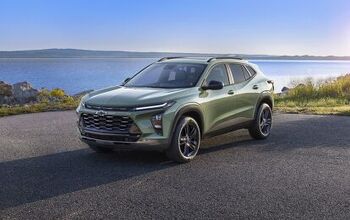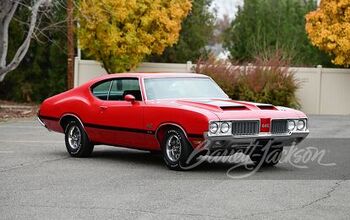Suzuki Death Watch 8: A Eulogy Due To Incompetence

When the news came out last night of American Suzuki Motor Corporation (ASMC) filing for Chapter 11 bankruptcy, I was glad to be validated in my suspicions, but sad that a potentially great opportunity had been wasted due to mismanagement and short-sightedness on behalf of its Japanese management.
In other regions, Suzuki does an excellent job catering to the needs of each domestic market. In India, through their long time partnership with Maruti (which has since turned into full ownership of the once state-owned automaker), Suzuki enjoys double digit market share that is the envy of every other automaker in the country. Maruti Suzuki has control over product, they understand the needs of Indians looking for new cars, and they have enough financial input into SMC’s bottom line that the executives in Japan have no choice but to listen.
In North America, things haven’t been as pleasant for the plucky automaker. After dealing with a toxic review from Consumer Reports in the late 80s, saddled with a narrow range of vehicles and General Motors input throughout the 90s, and burdened with selling Korean shitboxes in the 2000s after a joint venture purchase of Daewoo with GM and SAIC, the car maker didn’t have a chance. Or did it?
Suzuki is, unfortunately, broken at the top and ASMC’s Chapter 11 filing is not necessarily the fault of those working in Brea, California. During my conversations with a number of current and former ASMC employees over the last few months, there was definitely a sense that those in charge in Japan either planned for the automotive division to fail, resulting in the Chapter 11 filing, or were complicit in listening to Chairman Osamu Suzuki’s incompetence and didn’t want to piss off the boss. Or both.
During one particular conversation with a former ranking ASMC employee, Osamu was described as “a senile old man that has absolutely no idea what he is doing.” That same former employee also stated the reason for the end of the Volkswagen-Suzuki tie-up wasn’t due to Volkswagen attempting to poach Suzuki for all it was worth or the rank and file engineers not getting along. Instead, Osamu merely “changed his mind”, invented a story to fit his modus operandi, and blasted it to the media as much as he possibly could. No wonder then, when the end of the partnership came to light in the press, Volkswagen’s reply was “we have absolutely no idea what is going on.”
With a company head like Osamu calling the shots, doing what he can to keep Suzuki under his absolute control, it is no wonder ASMC failed in the US. His judgement has been highly impaired for years and there is nobody in a position to kick him off the throne.
And that absolute control is what brings us to the other reason Suzuki has failed to make a massive presence in North America over the last 15 years: who has the power? For every Japanese brand that decides to bring their vehicles to the North American market, their local American headquarters are the nerve center for much of the product planning. Toyota Japan doesn’t plan the next Tundra. Even Nissan’s reincarnation of the Z car, the 350, was mainly worked in the United Stated because that is where they knew they would realize most of their sales. But, ASMC had absolutely no control over what they sold, save for the Equator and some packaging on other vehicles. ASMC didn’t request certain models be built for the American market. ASMC was told what they would sell, whether they liked it or not.
ASMC’s target over the last couple of years has been to make a profit without haven’t to invest in its portfolio in order to pull it off (or at least that is what everyone has been told). There is no such thing as a legitimate business that requires no input. That’s a Ponzi scheme. Unfortunately for employees, dealers, and brand loyalists, the people running this scheme are not the ones who are going to have to pay for it in the end.
Suzuki Canada, with its lackluster range of vehicles, has been in the same boat, selling even less selection than that of its sister to the south. So, even though Suzuki Canada says everything is good in the Great White North, just remember the same people are at the helm in Japan, and there is no geopolitical border for incompetence.

More by Mark Stevenson
Latest Car Reviews
Read moreLatest Product Reviews
Read moreRecent Comments
- 3SpeedAutomatic Nope....
- Bd2 Looking forward to flooding the rental lots with Hyundai and Kia models, this is just one obstacle now eliminated.
- Kcflyer keep the color. lose the stupid front design. make it reliable, at least as reliable as a base 911. Then and only then is it somewhat worthy of that price.
- FreedMike I'm not sure why anyone would choose this over an A8 or S-class.
- FreedMike I think the manufacturers who are discontinuing affordable small and midsize cars in favor of more expensive crossovers (that are built on the same platforms and use the same mechanicals as said small and midsize cars) may well live to rue that decision. Having said that, though, at least GM is offering decent entry level stuff beyond the Malibu, so good for them.

































Comments
Join the conversation
Why does TTAC keep "reporting" that Suzuki is dead? Their virtually non-existant American distribution company is dead. Suzuki? Doing just fine last I checked.
Good morning, Can anybody tell me what will be a reasonable discount to ask for Kizashi due to bankruptcy. Do you think it is possible to get them around 16-18 K. Thanks